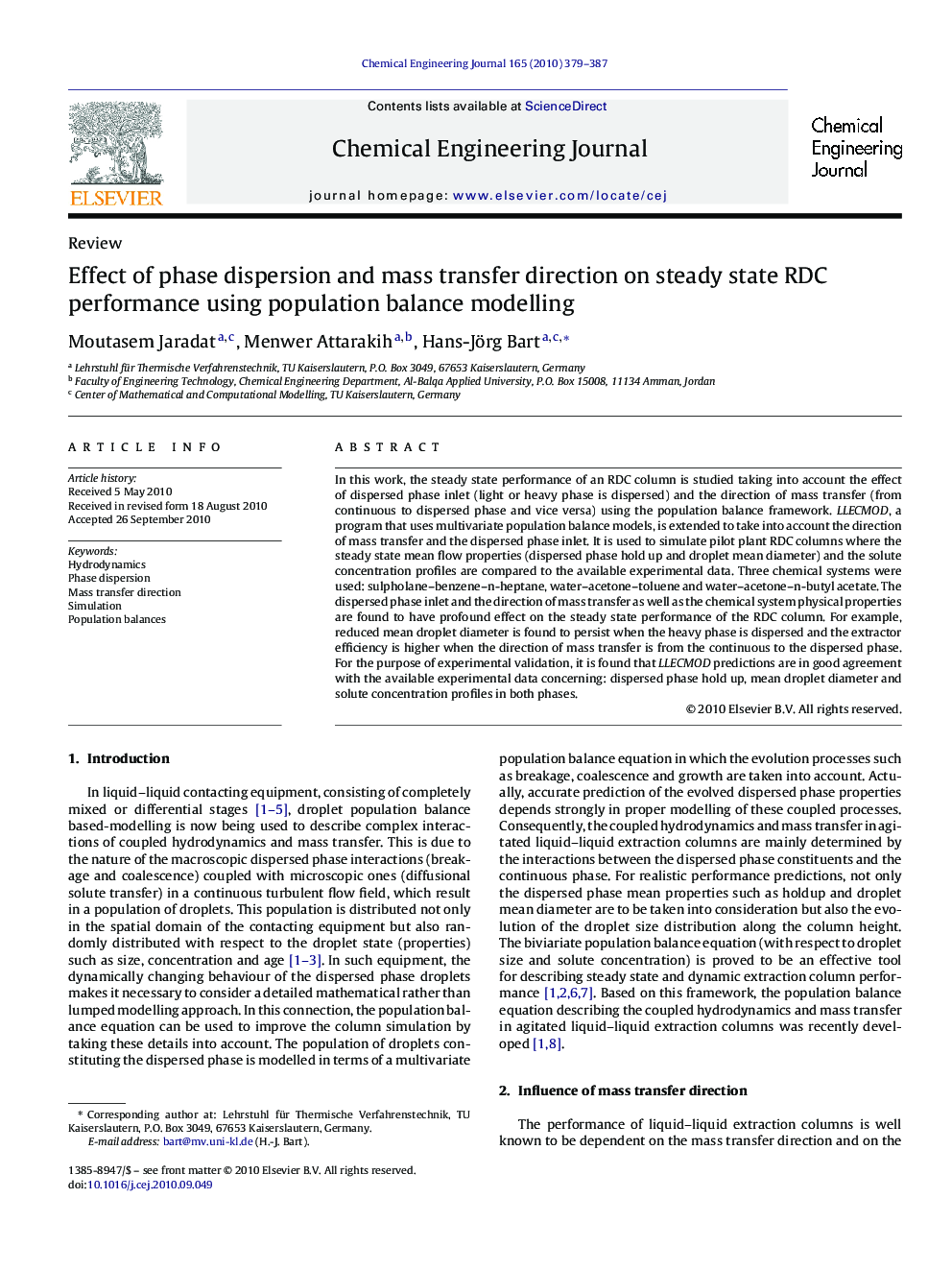| Article ID | Journal | Published Year | Pages | File Type |
|---|---|---|---|---|
| 151714 | Chemical Engineering Journal | 2010 | 9 Pages |
In this work, the steady state performance of an RDC column is studied taking into account the effect of dispersed phase inlet (light or heavy phase is dispersed) and the direction of mass transfer (from continuous to dispersed phase and vice versa) using the population balance framework. LLECMOD, a program that uses multivariate population balance models, is extended to take into account the direction of mass transfer and the dispersed phase inlet. It is used to simulate pilot plant RDC columns where the steady state mean flow properties (dispersed phase hold up and droplet mean diameter) and the solute concentration profiles are compared to the available experimental data. Three chemical systems were used: sulpholane–benzene–n-heptane, water–acetone–toluene and water–acetone–n-butyl acetate. The dispersed phase inlet and the direction of mass transfer as well as the chemical system physical properties are found to have profound effect on the steady state performance of the RDC column. For example, reduced mean droplet diameter is found to persist when the heavy phase is dispersed and the extractor efficiency is higher when the direction of mass transfer is from the continuous to the dispersed phase. For the purpose of experimental validation, it is found that LLECMOD predictions are in good agreement with the available experimental data concerning: dispersed phase hold up, mean droplet diameter and solute concentration profiles in both phases.
